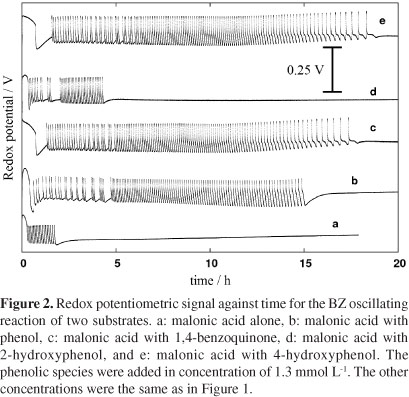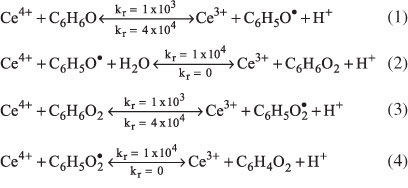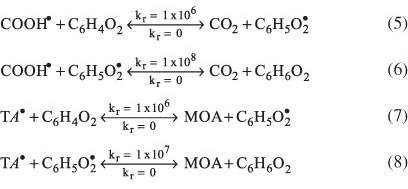The classic Belousov-Zhabotinsky reaction was modified by adding phenol as a second organic substrate that kinetically competes with the malonic acid in the reduction of Ce4+ to Ce3+ and in the removal of molecular bromine of the reaction mixture. The oscillating reaction of two substrates exhibited burst firing and an oscillatory period of long duration. Analysis of experimental data shows an increasing of the bursting phenomenon, with a greater spiking in the burst firing and with a longer quiescent state, as a function of the initial phenol concentration increase. It was hypothesized that the bursting phenomenon can be explained introducing a redox cycle between the reduced phenolic species (hydroxyphenols) and the oxidized ones (quinones). The hypothesis was experimentally and numerically tested and from the results it is possible to conclude that the bursting phenomenon exhibited by the oscillating reaction of two substrates is mainly driven by a p-di-hydroxy-benzene/p-benzoquinone redox cycle.
reaction kinetics; mechanisms; phenolic compounds; BZ reaction; bursting phenomenon






